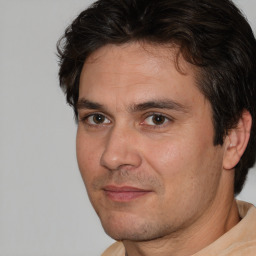Defining and comparing the contingency and trait theory of leadership
Leadership can be defined as a process of leading a group of employees within the business organization. Further, it is also defined as an ability of management in order to make sound decision and inspire other individuals to perform well within the enterprise. Effective leaders within the organization set challenging as well as achievable goals for their team members and guide them to work efficiently and effectively in order to achieve their individual as well as organizational goals and objectives (Vroom and Jago, 1988). Thus, it is significantly true that leadership plays a significant role within the business enterprise and this essay will give a clear explanation of two different theories of the leadership which have been mentioned in the case study. These are contingency and trait theory respectively. Both theories will be critically evaluated in order to give reader a clear idea about them.
Guarantees Beyond Your Imagination
ORDER NOW- Money-Back Guarantee
- Unlimited Amendments
- Ownership Guarantee
- Individual Attention
Different authors have given their own perception towards the leadership. From the view point of Zaccaro (2007) leadership is a combination of different characteristics like a leader has to think strategically and needs to have strong analytical ability as well. Each and every leader should possess some specific traits so that they can lead business organization to achieve their desired goals and objectives in a proper and systematic manner. Some important traits which leader should comprise are motivation, self-confidence, initiative, team leader, etc. From the view point of Zacarro, leaders will be treated effectively if they change their way of style in managing and leading the individuals according to the situation which prevails within the business organization. Further, Lemay and Ashmore (2006) stated that the concept of contingency theory is not the latest one and it is almost more than one thousand years old. This theory further argues that there is no single way of leading people and every leadership is based on any situation. This eventually shows that there are individuals who execute their work with maximum level. Fleeson and Jayawickreme (2015) stated that contingency theory is based on two types of effective leaders. These are as follows:
- Consideration leaders who involve building strong interrelationship with employees within the business organization.
- Initial structure leader provides genuine structure in order to assure that the task is completed on given deadline and organization has achieved their goals.
This theory stated that behaviour which is opted by leader is totally depended on situations and circumstances which manager faces in their life. Feidler, stated that their focus is on the leaders who are generally transforming themselves into some negative characters and this is the reason why some organizations are facing downfall in recent times. This generally happens because managers or leaders are very much emphasized on developing their own interest rather than developing others. Some leaders are generally power oriented and they do not have any moral values. Leaders like Hitler and Saddam Hussain come in this category. According to Zhang and Fjermestad (2006) contingency theory is generally assessed that success of leader involves various components of contingency which include subordinates and different group variables that eventually help leaders to achieve their organizational goals and objectives. Leaders have to guide employees in such a way that they can move to the right path.
However, Van Wart (2014) stated that each and every leader has their own way of functioning and it differs from one person to another. Mahatma Gandhi was a great leader too and his way of functioning was different from Hitler and Saddam Hussain. These leaders had eventually changed the meaning of leadership by defining their different attributes. With the implication of that, employees will be able to solve their problems and take decision based on their own work. Along with this, they will be able to accept the change in a significant manner.
On the other side, trait model of leadership is usually based on different traits of many leaders. It can involve both successful and unsuccessful leaders which eventually help in predicting the effectiveness of leaders. Successful leaders have interest, abilities and various personality traits which are different from the ones who are less effective leaders. Moreover, Manion (2011) stated that this style of leadership gives much more importance to the qualities of individuals rather than what qualities they have developed after coming in contract with the followers. Leadership trait theory can be identified by its name only that it emphasize on the certain characteristics of the managers. Gamage (2006) argued that if you are not able to find people with their traits then you will not be able to find the best leaders for the business organization. This theory is important for the leaders in order to choose desired action plan so that they can convert the vision and mission of the venture into the reality. Further, the executives of the global organization focus on this theory as this helps their employees to achieve their individuals and organizational goals and objectives in desired manner. Further, with the help of it, leaders are also able to achieve their ambition and motive. This theory also plays a crucial role because it helps the managers to develop new leaders by putting some challenging task on their shoulders.
As it was discussed earlier too that the Mahatma Gandhi and Hitler were having different traits and their way of leading people were certainly different from one another. Strang (2007) stated that the traits can be learned as well from different perspective. He also stated that the personality trait is strongly linked with the perception of the individuals to lead a team. On the contrary side, Fleeson and Noftle (2008) stated that the leaders should not be full of ambition. Instead of that, they need to be energized and proactive so that the other employees within the team will be able to work in efficient manner to achieve the set targets within the deadline. Further, it is also necessary for the leaders to develop strategic vision either for short term or long term. With the implication of that, employees will be dedicated towards their work and they will give best of their efforts to achieve the goals and objectives. Moreover, Van Wart (2014) stated that leaders can take some necessary steps in order to develop successful vision for the business organization. These steps are stated down under:
Selection and development: HR manager of the venture will be responsible for the same and they have to select best of the people who are multi skilled and talented. By involving such people, there will be less cost conducted on their training and development and leaders will be able to find their traits and will lead them to achieve their individuals and organizational goals. Further, leaders will also focus on enhancing their skills and direct them to achieve the vision.
Structuring: As the competition is getting much more intense within the business organization within the same industry, it is necessary for the leaders to develop an effective structure so that the information can be flowed precisely without any miscommunication and conflicts (Leadership Theories, 2016). Further, this will also help the business venture to get a competitive advantage over their major competitors.
Motivation: Motivation plays an important role and it is the prior duty of the leaders to motivate their employees in each and every situation so that they give their best in each and every task they do.
Building team: Working in team is much easier than handling the task individually. Here, leaders have to develop a team of the best employees so that they can direct their members to achieve the given goals within the set time period. Leaders also acts as a moral booster and focuses on developing the employee's efficiency.
Making change and innovation: Change is the essence of life and leaders have to make necessary change along with the collaboration of the managers in order to function properly and more effectively. These changes can be in term of innovation, technology or up gradation. Each and every organization have to change with the time otherwise they will be left course behind in getting competent.
From the above discussion, it is clearly evident that contingency leadership theory and trait theory having their own significance and also have their own approach to perform work. Some leaders opt trait and some contingency for conducting their business operations. Moreover, contingency theory is much suited for the leaders of different big organizations namely General Electric (GE), IBM, Bank of America, PepsiCo, etc. The leaders choose this theory because it has different leadership style under that which includes autocratic, democratic and laissez faire. Further, it will be necessary for the leaders to see that in which scenario they are working in and then prefer to implement the leadership style. Moreover, McCabe and Fleeson (2012) stated that generally leaders focusing on implementing democratic leadership style because it involves the contribution of employes at the time of taking effective decisions. With that, employees feel motivated and they work with best of their efficiency to achieve their organizational goals and objectives. Further, this theory also helps in enhancing the skills and competencies and help venture to achieve their goals and objectives.
Get 25% Flat Discount on Each Order + 5% Extra By Placing Through App
Place Your OrderMoreover, (Vroom and Jago, 1988) stated that the contingency leadership theory is quite useful for leaders in order to achieve the goals and objectives. For instance, global organizations like Tesco, Walmart have to rely on the contingency theory and need to take the decision by considering the urgency of decision. As organization has different departments, they might face problem in some of them and during this time, the owner, manager or leader can take quick decision to change the mentioned product with the new one. However, if they have time then they can gather the employees and can take valuable suggestion of their for making the final decision. Further, at the time of taking quick decision to, leaders have to keep their cool so that they do not lose their temperament and implement the best decisions which improves mentioned firms efficiency and productivity
Apart from this, the contingency and trait theory have their own importance and leaders have to follow one for their effective functioning. Trait leader is treated or can be defined as person who is gifted or one can say that they have given unique capabilities by born. However, for big and private firms, contingency theory is much more suitable because business organization faces various situations on daily basis and leaders have to take effective decision so that it does not affect their goodwill and they achieve their goals and objectives in a significant manner. Moreover, leaders also have to make necessary changes as per the environmental conditions and should focus on making the change which is in favour of organization only (Gamage., 2006). On the other side, trait theory is only suitable for the organizations who are in small size or have flat structure. This is eventually because these small ventures can be managed by the leaders by making different combinations of traits like being as a communicator, problem solver and motivator.
Now coming again towards the contingency theory. There are various examples of the mentioned theory and leaders contribute their best to achieve the desired goals with the help of their potentially capable and multi talented employees, Steve Jobs, who was the owner of Apple company opts autocratic leadership style and focuses on developing innovative and latest designs in mobile gadgets which will attract customers towards their product (Zhang and Fjermestad., 2006). This generally came true and he directed all his employees to use creative technology in each of their product. On the other side, Richard Branson of Virgin airline opts the democratic leadership style and involve their each and every member in the decision making process.
From the above discussion it is clearly inferred that the leaders need to be dynamic and have to take the decision as per the situation pertaining in the business organization. Further, the style of managing the human resource need to be changed by considering the individual behaviour and how they operate their task and duties.
REFERENCES
- Fleeson, W. and Jayawickreme, E., 2015. Whole trait theory. Journal of Research in Personality. 56. pp.82-92.
- Fleeson, W. and Noftle, E., 2008. The end of the person-situation debate: An emerging synthesis in the answer to the consistency question. Social and Personality Psychology Compass. 2(4). pp.1667-1684.
- Gamage, T. D., 2006. Professional Development for Leaders and Managers of Self-Governing Schools. Springer Science & Business Media.
- Lemay, E.P. and Ashmore, R.D., 2006. The relationship of social approval contingency to trait self-esteem: Cause, consequence, or moderator?. Journal of Research in Personality, 40(2), pp.121-139.
- Manion, J., 2011. From Management to Leadership: Strategies for Transforming Health. John Wiley & Sons
- McCabe, K.O. and Fleeson, W., 2012. What is extraversion for? Integrating trait and motivational perspectives and identifying the purpose of extraversion. Psychological science. 23(12). pp.1498-1505.
- Strang, K.D., 2007. Examining effective technology project leadership traits and behaviors. Computers in Human Behavior. 23(1). pp.424-462.
- Van Wart, M., 2014. Dynamics of leadership in public service: Theory and practice. Routledge.












